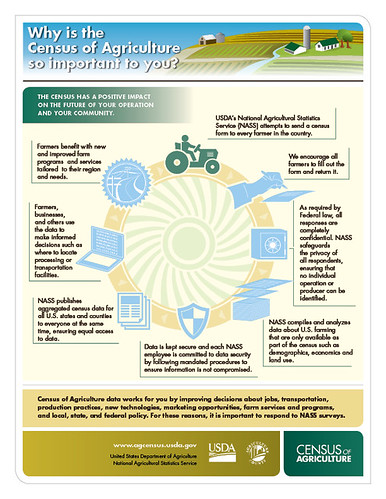
This post is part of the Science Tuesday feature series on the USDA blog. Check back each week as we showcase stories and news from USDA’s rich science and research portfolio.
On any given day, a USDA National Agricultural Statistics Service (NASS) employee or representative might be contacting a farmer or rancher to request information about his or her operation. At the same time, another employee could be analyzing data provided by other producers, while other employees prepare one of the many statistical reports we publish each year on U.S. agriculture to help with business, research and policy decisions.
Although the general cycle of data collection, analysis and publication of our agricultural estimates and census of agriculture programs is like a well-oiled machine, the recent rate of change is much more rapid than I can ever recall in the years I’ve worked in government statistics. New technology and changes in budgets, communications, leadership and workplace culture has allowed us to modernize to better serve the American public.
Unlike other fields, accurate and useful agricultural data still rely to a great extent on first-hand accounts from producers of on-farm production and quick analysis by statisticians to produce timely and valuable information during the growing season. But when I joined NASS, we relied on the U.S. mail, transcribed data from paper survey forms, and did almost everything by hand in local offices around the country. Now producers expect to and can complete their surveys online. We also collect information in person via a secure tablet, use satellite information to help ground-truth the data we collect, and analyze data using many new tools in a centralized office.
While the investment and changes to how we work haven’t always been easy, we are reaping the benefits of improved data quality and more efficient use of staff time. In one recent example, we improved how we update and maintain our lists of farmers and ranchers, which in turn allowed us to reduce the percent of agricultural operations sampled in a survey and save nearly 6,000 staff hours. In another example, we realized staff time savings of more than 23,000 staff hours through an initiative to better manage our survey process remotely in real time. The gained efficiencies allowed us to redirect staff time and effort to important new areas of interest in agriculture. NASS now collects and reports on data related to beginning farmers and women farmers, as well as to urban agriculture, pollinators, and anti-microbial resistance.
USDA agencies, Congress, and the agricultural and agribusiness communities ask for and use the data, which originate with producers themselves, to make informed decisions. They ask us for new information to help run programs and to help grow agriculture industries both at the local level and internationally. We are very pleased to be able to do that in responsible, modern and increasingly efficient ways. Stay tuned for even more improvements to better serve U.S. agriculture in the coming months.
